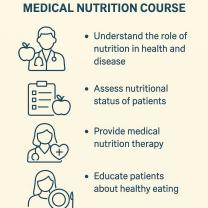What would cause low oxygen levels?
Low oxygen levels in the body, a condition known as hypoxemia, can occur due to various factors and underlying medical conditions. Some common causes of low oxygen levels include:
Respiratory Conditions:
- Chronic Obstructive Pulmonary Disease (COPD): COPD, which includes conditions like chronic bronchitis and emphysema, can lead to narrowed airways and reduced oxygen exchange in the lungs.
- Asthma: Severe asthma attacks or uncontrolled asthma can result in decreased oxygen levels due to airway inflammation and constriction.
- Pneumonia: Lung infections like pneumonia can cause inflammation and fluid buildup, impairing oxygen absorption.
- Interstitial Lung Disease: Various lung diseases, collectively known as interstitial lung diseases, can cause scarring and stiffness of lung tissue, reducing oxygen diffusion.
Cardiovascular Conditions:
- Congestive Heart Failure (CHF): Heart failure can lead to fluid accumulation in the lungs, reducing oxygen uptake.
- Cardiomyopathy: A weakened heart muscle may not pump blood effectively, leading to decreased oxygen delivery to tissues.
- Cyanotic Heart Defects: Some congenital heart defects can result in lower oxygen levels in the blood.
High Altitude:
- At higher altitudes, the air contains less oxygen, which can lead to lower oxygen saturation levels in the blood. Altitude sickness can occur when ascending to high altitudes too quickly.
Anemia:
- Anemia is a condition characterized by a reduced number of red blood cells or decreased hemoglobin levels. Red blood cells transport oxygen, and a lower count or reduced hemoglobin can result in decreased oxygen-carrying capacity.
Sleep Apnea:
- Obstructive sleep apnea causes repeated interruptions in breathing during sleep, leading to temporary drops in oxygen levels.
Obesity:
- Obesity can lead to mechanical restrictions on lung expansion and cause impaired oxygen exchange.
Chronic Hypoventilation:
- Conditions that affect the central respiratory centers in the brain can lead to inadequate ventilation, resulting in low oxygen levels. Examples include obesity hypoventilation syndrome and certain neurological disorders.
Exposure to Toxins:
- Inhalation of certain toxins, chemicals, or pollutants can damage lung tissue and impair oxygen uptake.
Pulmonary Embolism:
- A pulmonary embolism occurs when a blood clot obstructs a pulmonary artery, leading to reduced blood flow to the lungs and decreased oxygenation.
Acute Respiratory Distress Syndrome (ARDS):
- ARDS is a severe lung condition often caused by injury or infection, resulting in fluid buildup in the lungs and impaired oxygen exchange.
Smoke Inhalation:
- Breathing in smoke from fires or chemical fumes can cause damage to lung tissues and reduce oxygen levels.
Neuromuscular Disorders:
- Certain neuromuscular conditions, like muscular dystrophy or amyotrophic lateral sclerosis (ALS), can weaken the muscles needed for effective breathing.
It's important to note that low oxygen levels are a critical medical concern and can be life-threatening. If you or someone you know experiences symptoms of low oxygen levels, such as shortness of breath, confusion, rapid breathing, or bluish skin or lips, seek immediate medical attention. Treatment will depend on the underlying cause and may include oxygen therapy, medication, or interventions to address the specific condition.
Uncovering the Factors Behind Low Oxygen Levels
There are many factors that can contribute to low oxygen levels, also known as hypoxemia. Some of the most common causes include:
- Lung diseases: Lung diseases such as asthma, COPD, and pneumonia can make it difficult for the lungs to absorb oxygen from the air.
- Heart diseases: Heart diseases such as heart failure and congenital heart defects can reduce the amount of blood that is pumped to the lungs, which can lead to low oxygen levels.
- Altitude: At high altitudes, the air is thinner and contains less oxygen. This can lead to low oxygen levels, especially in people who are not used to being at high altitudes.
- Certain medications: Some medications, such as opioids and sedatives, can slow down breathing and lead to low oxygen levels.
- Blood disorders: Blood disorders such as anemia and sickle cell anemia can reduce the number of red blood cells, which carry oxygen to the body's tissues.
- Other medical conditions: Other medical conditions such as sleep apnea and cystic fibrosis can also lead to low oxygen levels.
When Breathing Gets Tough: Understanding Low Oxygen Levels
Hypoxemia can cause a variety of symptoms, including:
- Shortness of breath
- Chest pain
- Headache
- Dizziness
- Confusion
- Rapid heartbeat
- Bluish lips and fingernails
In severe cases, hypoxemia can lead to coma and death.
Health and Hypoxemia: What Causes Low Oxygen Levels
Hypoxemia can have a number of negative health consequences, including:
- Damage to the heart, brain, and other organs
- Increased risk of infection
- Increased risk of blood clots
- Increased risk of death
Diagnosis and treatment
Hypoxemia is diagnosed by measuring the oxygen level in the blood. This can be done using a pulse oximeter, which is a small device that is clipped onto a finger or earlobe.
Treatment for hypoxemia depends on the underlying cause. For example, if hypoxemia is caused by a lung disease, the patient may need to take medication to open up their airways or use oxygen therapy. If hypoxemia is caused by a heart disease, the patient may need to take medication to strengthen their heart or have surgery to correct the heart defect.
If you have any of the symptoms of hypoxemia, it is important to see a doctor right away. Early diagnosis and treatment can help to prevent serious health complications.













